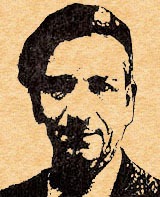|
Newspaper article deals with Fripp familyLowcountry History
|

|
|
Newspaper article deals with Fripp familyLowcountry History
|

|
English friends of Mr. and Mrs. Leslie E. Fourton, of Fripp Island, recently sent a newspaper clipping headed "Arthur started something with his family research." The article had been published in the Evening Echo, of Bournemouth, England, on Oct. 23, 1981, and even Included a photo of Tidalholm, on the Old Point of Beaufort.
The Evening Echo article dealt mainly with the genealogical researches of Arthur Fripp, a retired auctioneer, In Rowland Hills, Wimborne: "The great Fripp taunt began two years ago when Mr. Fripp's daughter Patricia, whose public speaking tours of America earn her 1,000 dollars a lecture, asked her father about their ancestors."
Being In America at the time, Patricia Fripp telephoned eight Fripps listed in a South Carolina telephone directory. A correspondence began which "revealed that one John Fripp, of Bristol, had emigrated to Carolina with his son in the late 17th century, bought a plantation on Edisto Island in 1696 and that the family had gone on to control nine plantations with 300 slaves."
The article continued to relate how Charles II had granted Fripp's Island "to Captain Fripp the pirate as a reward for his help in the successful defence of Beaufort, South Carolina, against the marauding French and Spanish during the battles for the colonies."
A deeding of Fripp Island to Captain Fripp by Charles II of England has never been substantiated by any historical source. However, it is known that "John Ffripp" on May 12, 1698, "his Marke for Cattle & Hoggs which. is a Cropp & a Hole.in ye right Ear and a Cropp and a Slitt in ye Left" for his livestock on Edisto Island. The first mention of Fripp Island was in Governor Blake's records which read "ffebry 6, 1695/96. This Day came Richard Benett of ffripps island & recorded his mark for Cattle & Hoggs as followeth halfe of ye Eares off & Two peaces cut out."
It should be noted that the name of "Johannes Fripp" the privateer is essentially the same as "John Ffripp" the Edisto planter and the first of the American Fripps. There is a similar story about Captain Mongin, an early settler of Daufuskie Island, which is just as difficult to document, concerning a royal grant to a British sea captain.
John Fripp, whose first mention was on Edisto Island, purchased his first tract of land on St. Helena Island in 1707. In 1724, he purchased an additional 480 acres. By 1860, his sons and descendants owned about twenty plantations, encompassing 12,000 acres of land on St. Helena and neighbouring islands. William Fripp, Sr. owned 3,472 acres; Captain John Fripp had 2,210 acres, in addition to a large tract of Hunting Island, used as a game preserve and for hunting.
The Fripp family was partly Episcopalian and partly Baptist. According to Davidson, in his book The Last Foray, "it was said that whenever Captain John Fripp made a donation to (the Episcopal 'White Chapel'), his brother, 'Good Billy' Fripp made a larger one to the Baptists whose brick meeting house was more commodious and more substantial if somewhat less aesthetically successful."
Some of the Fripp plantations on St Helena Island mentioned in U.S. Treasury Department records during the War Between the States included Oliver Fripp's plantation, Thomas B. Fripp's plantation ("Tom B"), Hamilton Fripp's plantation and John Fripp's 'Big House' plantation.
All of the plantations named above were confiscated by the U.S. government for "non-payment of taxes" during the War Between the States.
Which still leaves unanswered the question of where the privateer Captain Johannes Fripp fits into the Fripp Family chronicle.
Back to Top